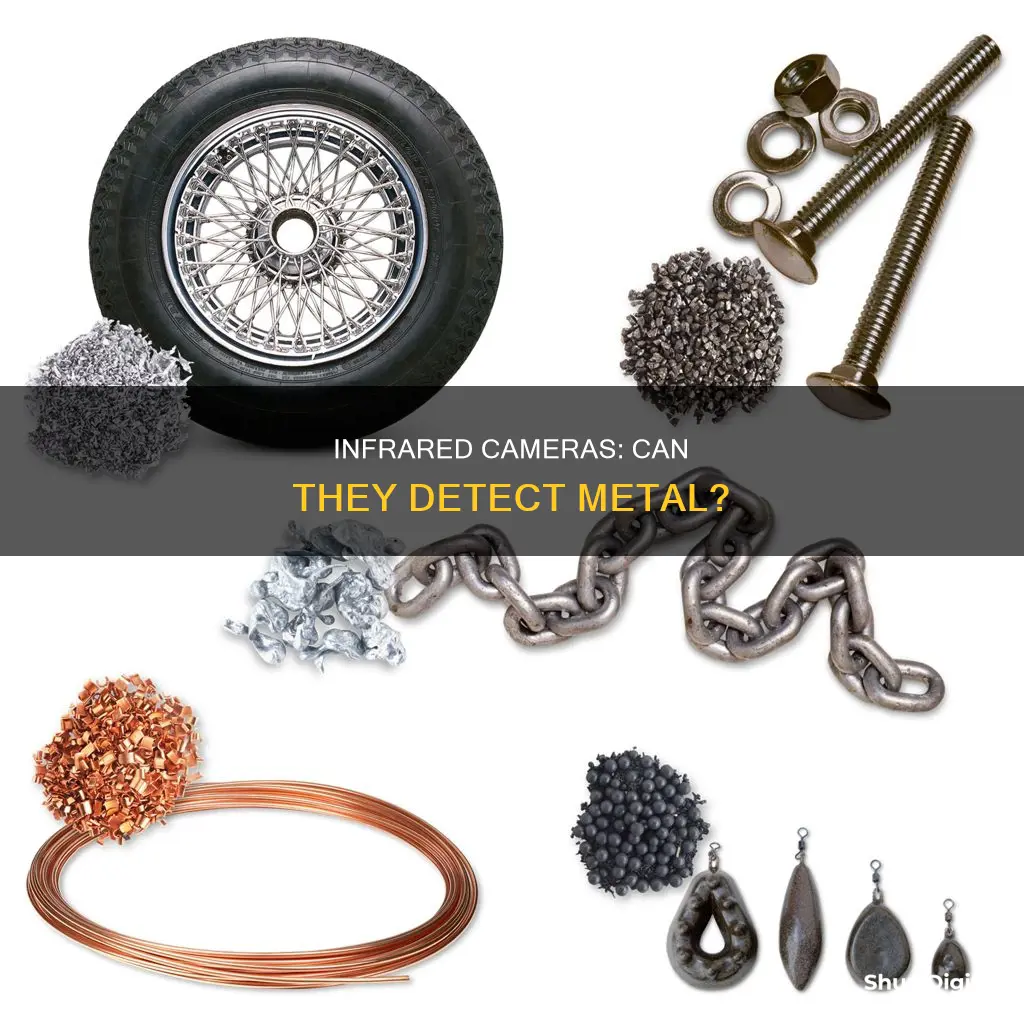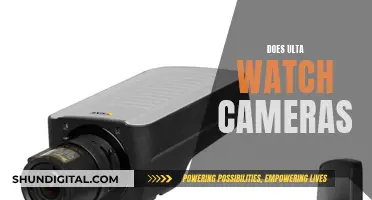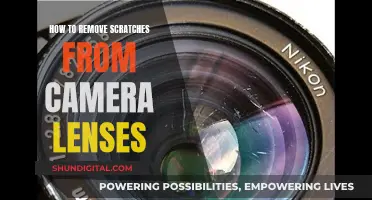
Infrared cameras, also known as thermal cameras, are used to detect heat. They can be used to see through smoke and fog, but they cannot see through walls, metal, or glass. While thermal cameras cannot see through metal, they can detect heat on its surface, and conductive metals may reveal hot or cold spots.
| Characteristics | Values |
|---|---|
| Can thermal cameras see through metal? | No, thermal cameras cannot see through metal objects. |
| Can thermal cameras see the inside of metal objects? | No, but they can detect hot or cold spots on the surface of conductive metals. |
| Can thermal cameras see shiny metal? | No, shiny metal reflects infrared radiation, acting as a mirror. |
| Can thermal cameras see metal coated with other materials? | Yes, thermography cameras can be used to inspect metal coated with other materials. |
| Can thermal cameras see oxidised metal? | Yes, thermography cameras can be used to inspect oxidised metals. |
What You'll Learn

Smooth and polished metal reflects infrared radiation
The thicker the metal surface, the better it will be at reflecting infrared radiation. This is due to the fact that thicker metal surfaces are better able to absorb and transfer the radiation. Additionally, the smoothness of the metal surface allows for maximum reflection of the radiation.
To ensure optimal reflection, the metal surface should also be polished and cleaned. This is because any impurities or imperfections on the surface of the metal can interfere with its ability to reflect the radiation.
When infrared radiation is reflected off a smooth and polished metal surface, it will change direction and can be detected by sensors tuned to pick up infrared frequencies. This process is known as specular reflection, and it occurs when the angle of the incident radiation is equal to the angle of reflection.
It is important to note that infrared radiation cannot pass through metal objects. However, conductive metals might reveal hot spots, cold spots, or the level of a substance inside a metal container.
Smart TV Cameras: Are You Being Watched?
You may want to see also

Oxidized metal or metal painted with matte material is easier to measure
Thermal cameras can never see through metal objects. However, metal surfaces can be tricky when it comes to thermography. Shiny metal objects with smooth or polished surfaces will reflect infrared radiation, acting as an infrared mirror in the same way that glass does. This can cause issues for those attempting to monitor pipes or machinery for any parts that are overheating.
Oxidized metal or metal painted with a matte material is much easier to measure accurately. This is because most organic, painted, or oxidized surfaces have emissivity values close to 0.95. Emissivity is the measure of an object's ability to emit infrared energy, and emitted energy indicates the temperature of the object. Emissivity values can range from 0 (shiny mirror) to 1.0 (blackbody).
Infrared cameras can detect hot spots, cold spots, or the level of a substance inside a metal container. For example, thermal imaging can be used to determine how full a metal tank is based on the temperature difference on the metal surface caused by the liquid inside.
Philips 55PFL5601 F7: Is There a Camera Feature?
You may want to see also

Thermal cameras can detect hot and cold spots inside metal
Thermal cameras can detect heat and assign colours based on the range of temperatures detected by the sensor. They are often used to identify heat loss in homes, especially around windows and doors, and to locate leaks and abnormal temperatures. This can help save energy and costs. They can also be used to detect water leaks or missing insulation inside walls.
Smart TV Spy Cameras: Fact or Fiction?
You may want to see also

Metal objects cannot be seen through
However, thermography cameras can be useful when inspecting metal coated with other materials or oxidised metals, as they don't exhibit infrared radiation, and measurements can be taken. Conductive metals might also reveal hot or cold spots, or the level of a substance inside a metal container.
Thermal cameras are used to detect how heat is distributed across an environment. They detect heat rather than light, displaying this information as a heat map with relevant temperature data. Thermal cameras are used in various industries, including manufacturing, electrical sub-stations, water treatment plants, and defence. They are also used by police and security professionals to track people in low-light conditions.
Vizio M-Series TV: Camera Included or Not?
You may want to see also

Thermal cameras can detect the level of a substance inside a metal container
Thermal cameras, or infrared cameras, are able to detect the level of a substance inside a metal container. However, they cannot see through metal objects. Metal, especially shiny, smooth, or polished metal, can be challenging for thermography. Such metal surfaces reflect infrared radiation, acting as a mirror, which can make it difficult to monitor pipes or machinery for overheating parts.
On the other hand, oxidised metal or metal coated with a matte finish is easier to measure accurately with thermal imaging. Conductive metals can reveal hot spots or cold spots, and the level of a substance inside a metal container can be determined by the temperature difference on the metal surface.
Thermal cameras detect heat and assign colours based on the range of temperatures detected by the sensor. They are widely used in various fields, including building maintenance, firefighting, autonomous vehicles, and search and rescue operations.
While thermal cameras can detect heat through smoke, fog, rain, and other obstacles, they cannot see through solid objects like walls, concrete, or glass. They capture the heat emitted by the object they are pointed at and can detect temperature differences caused by something within or behind it.
Surface Cameras: Watching or Just an Urban Myth?
You may want to see also
Frequently asked questions
No, infrared cameras cannot see through metal objects. However, they can detect hot or cold spots on the surface of the metal.
No, infrared cameras cannot see through walls. However, they can detect temperature differences on the surface of the wall.
No, infrared cameras cannot see through glass. Glass acts as a mirror for infrared radiation, reflecting the temperature of the user and their surroundings.
No, infrared cameras cannot see through concrete. However, they can detect temperature differences on the surface of the concrete, which can indicate issues such as pipe leaks or radiant heating.
Infrared cameras are used in a variety of fields, including law enforcement, firefighting, electrical inspection, medical diagnostics, and more. They are particularly useful in low-light conditions or when visibility is obscured by smoke, fog, or other factors.







